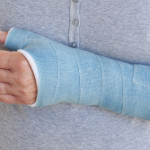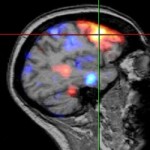Effects of Dietary Macronutrient Content on the Sensation of Fullness

The feeling of fullness experienced after food intake is given by gastric distension, which is sensed by mechanoreceptor neurons in the stomach and later relayed, via the vagus nerve, to sites in the central nervous system that mediate ingestive behavior. Satiation is, therefore, affected by the volume of food ingested, but changes in gastric relaxation…
Could Physical Activity Delay Cognitive Decline?

Along with increased longevity comes a greater risk of developing age-related diseases, cognitive impairment and dementia. Developing effective strategies to reduce the risk of cognitive decline or slow its progression is, therefore, critical. Vascular risk factors, including hypertension, heart disease, smoking, hypercholesterolemia, and lack of physical activity, have been identified as modifiable risk factors contributing…
Can Levels of Essential Fatty Acids Predict Risk for Psychosis?

Recent studies demonstrate a critical role of fatty acids in the structure and function of the developing nervous system. Essential fatty acids (EFAs), omega-3s in particular, are an absolute requirement for a healthy brain, as they are involved in the composition of neural membranes and in the production of neurotransmitters. Their role in psychiatric and cognitive…
Glucose Uptake in Skeletal Muscle Changes with Aging

Adequate muscle activation and force are necessary to fulfill daily tasks, yet these exercises become increasingly difficult as a person ages. Skeletal muscle activity may be evaluated through electromyography (EMG), a tecnique performed to detect the electrical potential generated by muscle cells when they are electrically or neurologically activated. Studies using EMG show that spatial activation in muscles is not uniform…
Bennett’s Fracture: when a Step-Off Turns into a Silver Lining

Bennett’s fracture is the most common type of fracture of the thumb. It is a fracture of the base of the thumb which extends into the joint of the small bones of the hand. The fracture process involves the bone breaking away from the joint, leaving behind a small volar bone fragment, known as the palmar beak fragment, that remains…
Temporal Lobe Epilepsy and Hippocampal Volume Loss – Cell Loss or Receptor Change?

Temporal lobe epilepsy (TLE) is the most common form of partial or localized epilepsy in adults and accounts for approximately 60% of all patients with epilepsy. Medial temporal lobe epilepsy (mTLE), or limbic epilepsy, is the most common type of epilepsy, representing about 80% of all TLEs. mTLE is associated with head trauma, encephalitis, meningitis,…
Fetal Corpus Callosum Measurement as an Imaging Biomarker for Abnormal Neurodevelopment

Intrauterine growth restriction (IUGR) refers to abnormal fetal growth, and often results from poor maternal nutrition or lack of adequate oxygen to the fetus. IUGR is found in up to 10% of all pregnancies, in 20% of stillborn births and is associated with high morbidity and mortality. Volume and neural network changes in cerebral white and…
Hippocampal Atrophy in Critically Ill Patients

Critically ill patients may suffer delirium, encephalopathy or other neurobehavioral abnormalities, often with lasting effects. This is thought to be a result of systemic inflammation which compromises the blood brain barrier and leads to neural damage. The hippocampus is particularly sensitive to inflammatory and hypoxic change, both common sequelae to acute severe illness and/or chronic…
Changes in White and Gray Matter are Biomarkers of Alzheimer’s Disease Years before Clinical Manifestation

A debilitating disease of the aging mind, Alzheimer’s Disease affects 5 million people over the age of 65 years. Women are affected at a higher rate than men because they tend to live longer. The hallmark lesion of Alzheimer’s is a build up of pertinacious amyloid, resulting in the death of nerve cells and demise…
Lower Childhood IQ May Be a Predictor of Brain Lesions Associated with Stroke and Dementia

Late-life cognitive decline due to dementia and stroke may have its origins in childhood intelligence, according to a recent study. While previous studies have shown an association between educational level and late-life cognitive decline and dementia, researchers at the University of Edinburgh suggests that early childhood IQ might also be a predictor of late-life organic brain…
 AnalyzeDirect
AnalyzeDirect